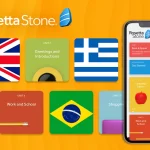Whether guiding someone unfamiliar with an area or telling a friend how to prepare a new recipe, clear directions require meticulous detail and easily understood vocabulary. By organizing key information, defining ambiguous terms, emphasizing critical steps, and confirming understanding, directions in English become simple, effective and frustration-free.
Start with the Big Picture
Before diving into gritty detail, first provide useful context about the ultimate destination or goal. This well-known corner store or gorgeous overlook or delicious final dish helps anchor the significance of each navigational choice. Establish the ideal end result to work backwards in constructing the route.
Organize Logically
Break down directions into digestible chunks focused on one movement at a time in sequential action steps. Group concepts into paragraphs by location like exiting the train station, crossing the park, turning onto Elm Street or getting ingredients together, prepping components, assembling layers. Use transition words illustrating order like “first”, “next”, “then”.
Define Potential Ambiguity
The person following your directions won’t share your insider perspective. Define any specialized vocabulary or clarify options by including extra descriptor details, approximate distances and visual cues.
For example, distinguish “veer left at the oak tree filled hill” from “the wooded area”. Specify “Ivy Street located 3 blocks west of Main Street” or the “small fork-shaped pasta” versus just “farfalle”.
Emphasize Decision Points
Call attention to choice moments that provoke key turns by saying “Here’s where you…” or “Make sure to…” or “You must…” to flag pivotal precision. This removes doubt around which option to take should the path split in multiple feasible directions.
Invite Real-Time Questions
Preempt confusion by encouraging live questions should anything need clarification. Better to clear up uncertainty as someone situates your guidance in their tangible landscape than pushing forward only to realize later steps misapplied.
Confirm Comprehension
Lastly, have the person repeat back critical steps in their own words, teach it to someone else, or simulate following your directions. This two-way dialogue verifies shared understanding rather than one-sided guesswork.
With thoughtful preparation and receiving feedback, even complex routes translate into easily replicated guidance. Savvy direction-givers inform thoroughly, advise incremental choices and confirm fellow travelers truly follow the desired path from start to finish without losing their way.





